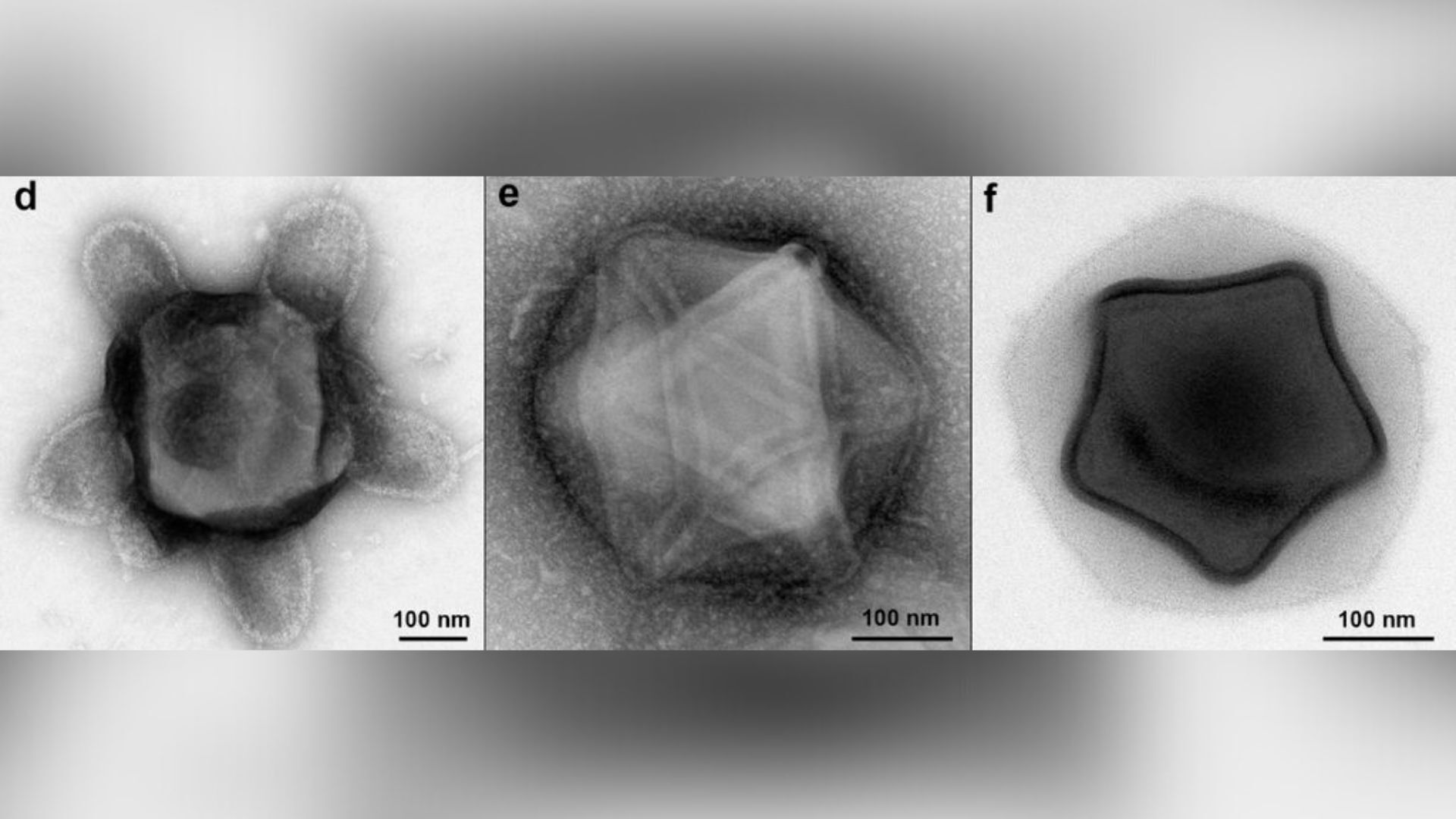Bizarre giant viruses with tubular tentacles and star-like shells discovered in New England forest
Giant viruses are much more diverse in shape and size than scientists previously thought, according to a new study.

Giant viruses lurking in the soils of a New England forest sport traits never seen in other viruses of similar heft — from star-like outer shells to bizarre, tubular appendages, according to a preprint study published in bioRxiv.
"What we found is a whole new diversity of shapes that we have never seen before," study co-author Matthias Fischer, a virologist at Max Planck Institute for Medical Research in Germany, told Live Science. "I would bet that many of those, if not the majority, are completely new and first sightings of viruses that we have never seen before."
Giant viruses usually range from 0.2 to 1.5 micrometers in size and have complex genomes that can carry up to 2.5 million DNA base pairs, according to the study. That's much larger than most viruses, such as influenza viruses, which range from 0.08 to 0.12 micrometers in diameter. So far, giant viruses have primarily been found to infect single-cell organisms, like amoebas, rather than animals or humans. This category of viruses has been found in ecosystems all around the world, including oceans, lakes in the Arctic and even melting permafrost.
In 2018, a separate team of scientists discovered giant viruses in the soil of Harvard Forest in central Massachusetts using a metagenomic analysis, in which they compared the genetic material found in the soil with sequences already present in global genetic databases. For the new study, researchers instead analyzed soil samples from this same forest using a transmission electron microscope, which involved blasting the soil with beams of electrons in order to see the embedded viruses in stunning detail.
Related: Giant viruses spew their DNA through a 'stargate.' Now, scientists know what triggers them.
"A genome can only tell you up to a certain point about an organism, so you don't know what it looks like," Fischer said in reference to the 2018 study. "Giant viruses are not only diverse based on their genomes but also based on the particles and the structures they make, and that was a completely new finding."
That said, because Fischer and his colleagues did not run their own genomic analyses, they cannot definitively call the newfound particles "viruses," he explained, and instead called them "virus-like" in their report. But in all likelihood, they are in fact viruses, he said.
Get the world’s most fascinating discoveries delivered straight to your inbox.
The researchers' imaging revealed a virus-like particle with a double-layered shell that had a distinctive star shape, which they called the "Christmas star morphotype." The team also identified viruses with fibers of different lengths, thicknesses and densities protruding from the particles' surfaces, and they referred to these funky particles as the "haircut" morphotype.
Although Fischer and his team are not yet sure which functions these bizarre features serve, he speculated that some of the viruses' characteristics may help them better attach to their host cells. The researchers also believe that similar giant viruses could be found in the soils of other hardwood forests around the world.
"This fascinating window into the complex world of soil viruses leaves little doubt that the high genetic diversity of giant viruses is matched by diverse and previously unimaginable particle structures," the researchers wrote in the June 30 preprint, which has yet to be published in a peer-reviewed journal.

Fischer stressed to Live Science that these types of giant viruses are likely not a threat to humans, but rather "very important players of the ecosystem." Soil viruses are key to carbon cycling — the process by which carbon moves between organisms, minerals and the atmosphere — because they help control the abundance of microbes, like bacteria, that directly influence carbon flow in the ground, research shows.
"[Viruses] are all around us, not just in soil. They're in water, they're in air, they're on your skin, they're in your guts, you just don't see them … and they have very beneficial effects not just for ecology, but on the long term for evolution," Fischer said. "That's also the reason why we did the study — to show the diversity of these wonderful little things all around us, and to inspire other people to look at the effects they have on the ecosystem."

Kiley Price is a former Live Science staff writer based in New York City. Her work has appeared in National Geographic, Slate, Mongabay and more. She holds a bachelor's degree from Wake Forest University, where she studied biology and journalism, and has a master's degree from New York University's Science, Health and Environmental Reporting Program.


